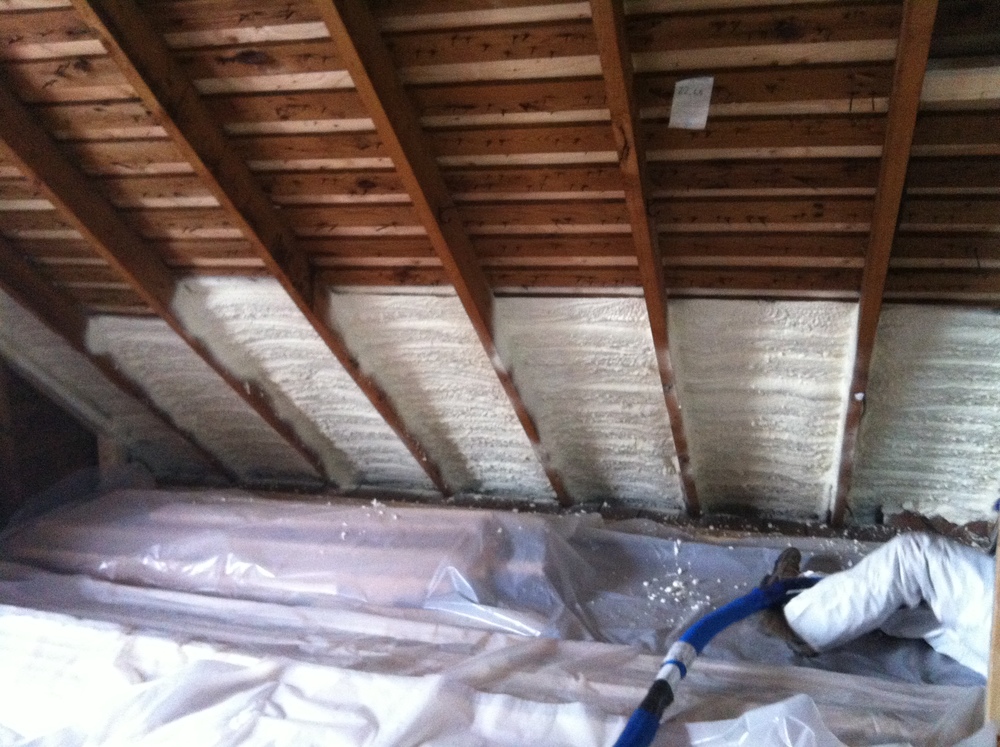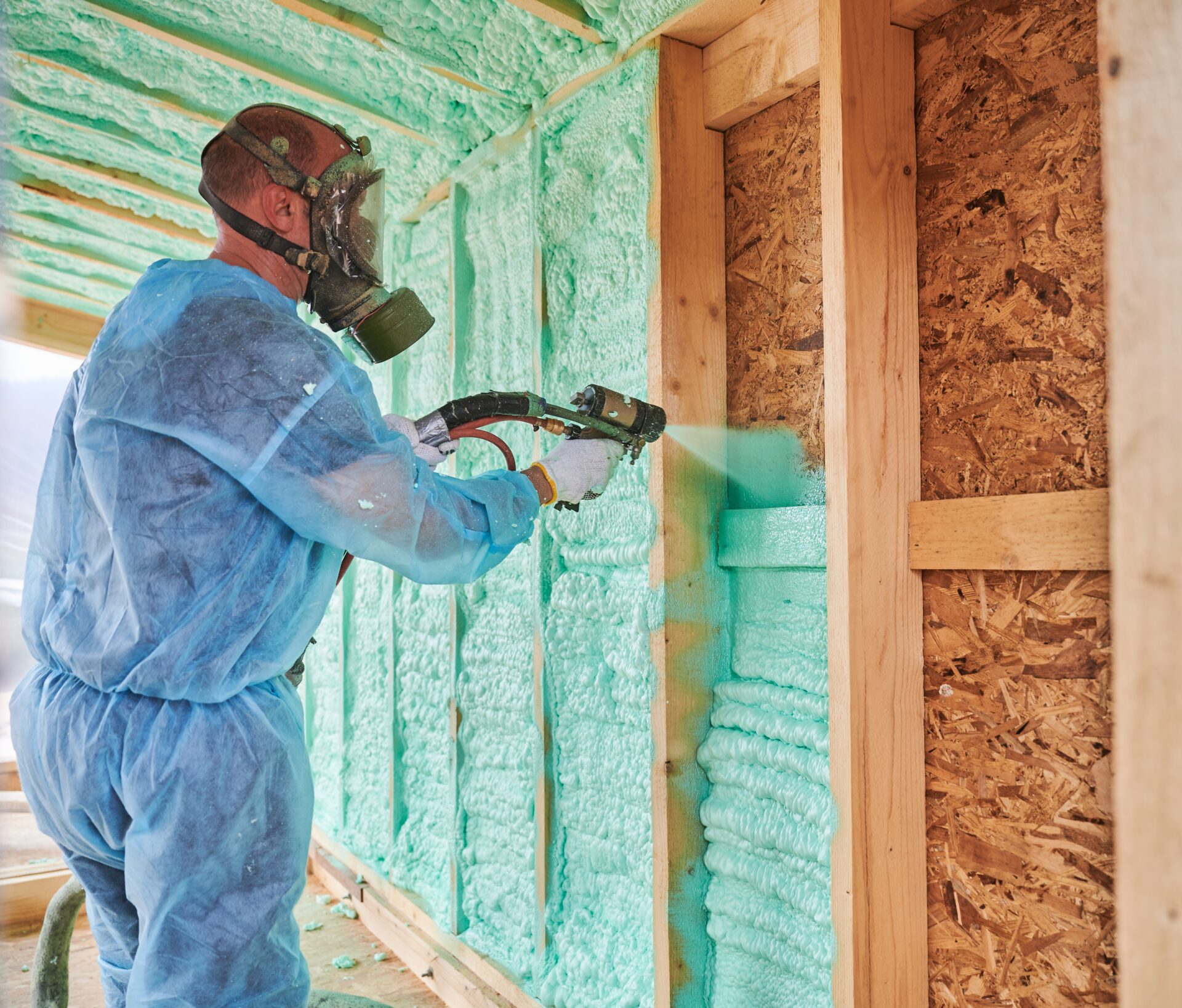Tips for Maintaining Your Spray Foam Insulation for Long-Term Efficiency
Tips for Maintaining Your Spray Foam Insulation for Long-Term Efficiency
Blog Article
Spray Foam: The Ultimate Remedy for Air Sealing and Insulation
Spray foam insulation has actually emerged as a leading option for reliable air sealing and thermal insulation, using an one-of-a-kind combination of properties that set it besides traditional methods. Its capability to increase and fill gaps makes it especially efficient in protecting against air leakage, which can considerably impact power performance. Comprehending the full scope of its benefits, installation processes, and comparisons with other insulation types is crucial for making educated choices. As we discover these facets, the effects for both brand-new building and constructions and retrofits end up being progressively significant. What elements should influence your choice?
What Is Spray Foam?
Spray foam is a flexible insulation material that combines the concepts of air sealing and thermal resistance to enhance energy efficiency in structures. Composed primarily of polyurethane or various other similar substances, spray foam is used as a liquid that increases upon call with surfaces, developing a solid, continuous layer of insulation. This one-of-a-kind property allows it to load gaps, splits, and voids that typical insulation products may ignore, offering a superior air seal.
There are 2 main kinds of spray foam: open-cell and closed-cell. Open-cell spray foam is lighter and much more flexible, providing excellent audio absorption and a lower R-value per inch - Spray Foam. In comparison, closed-cell spray foam is denser, offering a greater R-value, moisture resistance, and included architectural integrity to developing components
The application process typically includes customized devices, guaranteeing a smooth application that follows different substratums, including concrete, timber, and metal. This flexibility makes spray foam suitable for both brand-new building and constructions and retrofitting existing structures. Its capability to develop an airtight barrier dramatically adds to minimizing power intake and improving indoor air high quality, therefore making it a preferred choice among house owners and building contractors alike.
Advantages of Spray Foam Insulation
One of the most significant advantages of spray foam insulation is its phenomenal capacity to create a continuous air barrier, which efficiently reduces energy loss. Unlike conventional insulation materials, spray foam broadens to fill up fractures and spaces, making sure that air leakage is dramatically lowered. This particular not just improves energy efficiency but also leads to lower energy costs gradually.
Furthermore, spray foam insulation supplies exceptional thermal resistance, adding to a more secure interior atmosphere. Its high R-value per inch enables effective insulation in confined rooms, making it suitable for attic rooms, walls, and crawl spaces. The moisture-resistant properties of spray foam aid stop mold and mold growth, advertising much healthier living conditions.
An additional important benefit of spray foam insulation is its sound-dampening top qualities (Spray Foam). It successfully decreases sound transmission between areas, producing a quieter and more comfy home environment. The longevity of spray foam likewise stands out, as it does not droop or settle with time, maintaining its efficiency throughout its lifespan
Just How Spray Foam Works
Recognizing how spray foam insulation functions is essential for valuing its performance in air sealing and thermal resistance. Spray foam insulation contains two main components: isocyanate and polyol resin. When these parts are combined, they undergo a chemical response that creates the material to broaden swiftly, creating a thick foam that loads tooth cavities, splits, and gaps.
As the foam expands, it complies have a peek at this website with surface areas, creating an impermeable seal that significantly minimizes air seepage. This particular makes spray foam insulation highly a fantastic read effective at avoiding drafts and wetness infiltration, which can bring about power loss and damage over time. Additionally, the closed-cell variation of spray foam uses remarkable thermal resistance as a result of its inflexible framework, properly minimizing heat transfer.
The unique homes of spray foam enable it to adapt uneven surface areas, making sure detailed protection and a smooth barrier. Consequently, spray foam insulation not only enhances power performance yet additionally adds to enhanced indoor air quality by reducing the accumulation of irritants and toxins. Ultimately, understanding the technicians behind spray foam emphasizes its function as an exceptional choice for insulation and air sealing in both household and business applications.
Installment Refine Summary

Prior to installation, the area has to be properly cleansed and prepped, ensuring that surfaces are devoid of dirt, dampness, and particles. Since impurities can endanger attachment and total performance, this action is important. As soon as the location is prepared, the application entails blending the two components of the spray foam, which expands upon get in touch with and fills up spaces successfully.
Educated specialists need to perform the installment, making use of customized tools to ensure uniform coverage and optimum thickness. Safety and security preventative measures, consisting of putting on safety equipment and making sure appropriate ventilation, are crucial throughout this process. After application, the foam usually remedies rapidly, forming a strong obstacle that improves energy efficiency.
Contrasting Spray Foam to Typical Insulation
When reviewing insulation choices, spray foam insulation stands out in contrast to standard materials such as fiberglass and cellulose. Unlike fiberglass and cellulose, which can permit air infiltration, spray foam increases upon application, filling up crevices and spaces to create a closed seal.
Additionally, spray foam supplies a higher R-value per inch than standard insulation types, using more efficient thermal resistance in a thinner account. This characteristic is specifically useful in spaces with restricted dental caries depth. Spray foam is immune to dampness and mold growth, which can be a substantial concern with cellulose and fiberglass, especially in moist atmospheres.
Nevertheless, spray foam insulation usually lugs a higher upfront price than its traditional counterparts. Home owners should evaluate this first financial investment against long-lasting power financial savings and efficiency benefits. Eventually, while both insulation kinds offer their purpose, spray foam emerges as an advanced option for modern-day insulation demands, particularly in terms of air sealing and thermal effectiveness.

Conclusion
In summary, spray foam insulation represents a highly reliable remedy for attaining optimum air securing and thermal resistance. Its special buildings, consisting of dampness resistance and noise dampening, Go Here make it appropriate for various applications in both new building and constructions and retrofitting tasks (Spray Foam). The initial prices might be higher contrasted to standard insulation materials, the lasting advantages, such as significant power cost savings and improved interior air quality, warrant the financial investment and underscore its worth in contemporary structure methods.
Spray foam insulation has arised as a leading solution for reliable air sealing and thermal insulation, offering a special combination of properties that establish it apart from conventional methods.Spray foam is a versatile insulation material that integrates the principles of air sealing and thermal resistance to boost energy performance in buildings.When reviewing insulation options, spray foam insulation stands out in contrast to traditional materials such as fiberglass and cellulose. Inevitably, while both insulation types offer their purpose, spray foam emerges as an extra advanced option for modern-day insulation needs, especially in terms of air securing and thermal efficiency.
In recap, spray foam insulation stands for a highly efficient remedy for achieving ideal air securing and thermal resistance.
Report this page